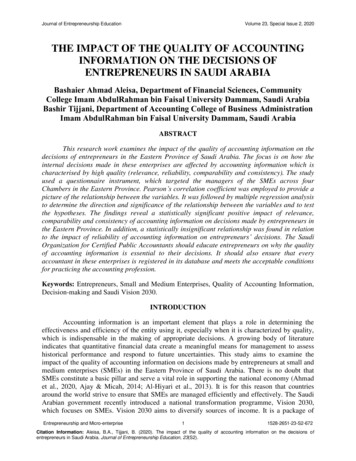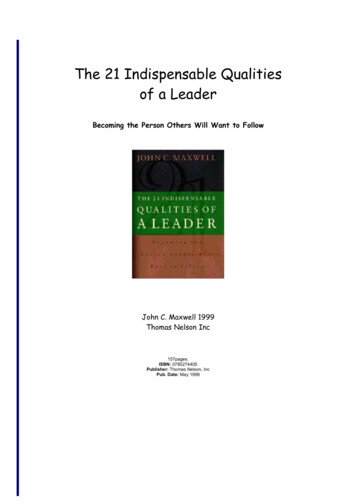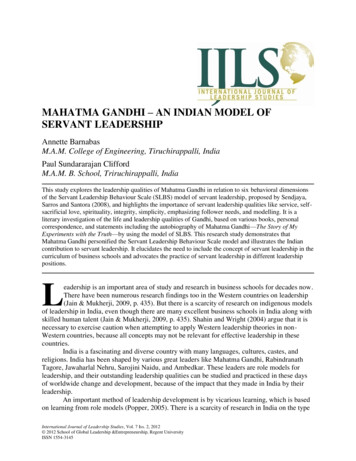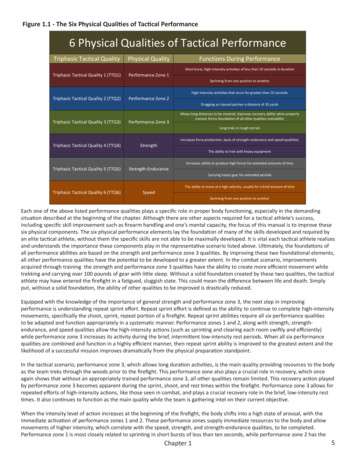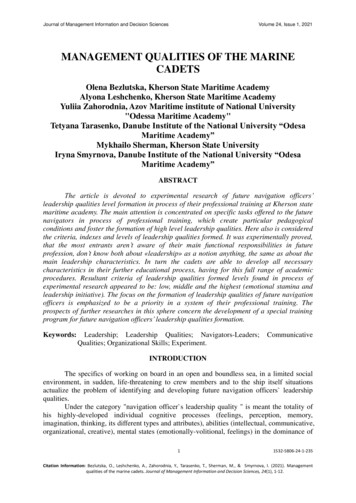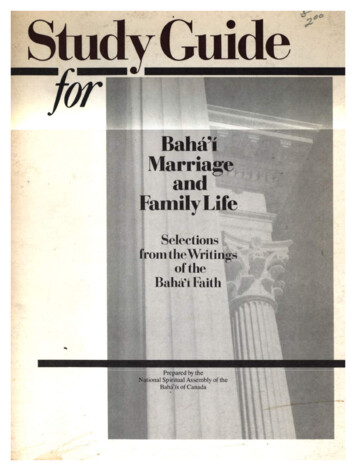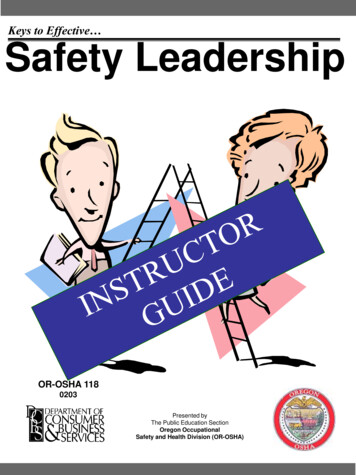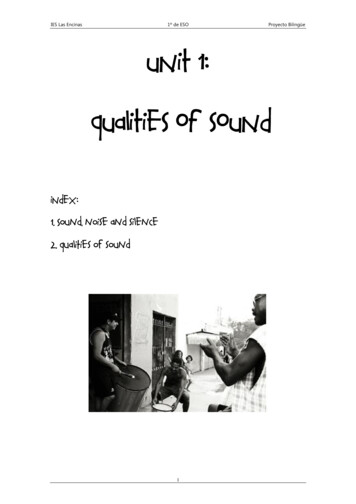
Transcription
IES Las Encinas1º de ESOProyecto BilingüeUNIT 1:QUALITIES OF SOUNDINDEX:1. Sound, noise and silence2. Qualities of sound1
IES Las Encinas1º de ESOProyecto BilingüeBasic VocabularyAcousticpollution :contaminaciónPropagation : propagación.acústica.Quaver, Eighth note: corcheaCrotchet, Quarter note : Negra.Rest: silencio (figura).Eardrum: timpano.Reverberation: reverberación.Echo: eco.Rough: áspero.Clef G (Treble clef): clave (de sol).Semibreve, Whole note : xteenthnote :(largo/corto).semicorcheaFrecuency : frecuencia.Silence : silencio (sensación).Glossy: brillante.Smooth: suave.Notes : notas musicales.Sonorous waves: ondas sonoras.Intensity: intensidad.Sound: sonido.Harmonics: armónicos.Staff: pentagrama.Ledger lines : líneas adicionales.Timbre: timbre.Matt: mate.To beam: en música, unir varias figurasMinim, Half note: blanca.mediante una barra.Nerve impulses: impulsos nerviosos.Tough: resistente, fuerte.Noise: ruido.Vibration: vibración.Pitch: afinación (grave/agudo).2
IES Las Encinas1º de ESOProyecto Bilingüe1. Sound, noise and silenceEssentially, music is sound. SOUND is produced when an object vibratesand it is what can be perceived by a living organism through its sense ofhearing. It travels through physical mediums by sound waves and it is normallya pleasant feeling. Sound propagates at high speeds. The waves travel throughthe air at 340 meters per second.Sounds are picked up by a very thin membrane in our ear, the eardrum,which connects the outer and middle ear. When sound waves hit the eardrum,the information produced by its vibration is transmitted to the brain by meansof nerve impulses.3
IES Las Encinas1º de ESOProyecto BilingüeNOISE is a disagreeable auditory experience but this is a subjectivedefinition (for instance, most of the percussion instruments produce noiseswhen they are played). Anyway, the physical difference between sound andnoise is the sort of waves: sound waves are regular and in a noise the wave isirregular.Finally, SILENCE is the lack of hearing sensation. Actually, there isn t suchthing as absolute silence. Even if we could isolate our selves completely fromouter sounds, we would still hear our own body s inner sounds.2. Qualities of soundThere are 4 basic qualities:PITCH (Hz) Low sound/High soundDURATION (Sec.) Short sound/Long soundINTENSITY (dB)Forte/PianoTIMBRE (Harmonics) What kind of sound?4
IES Las Encinas1º de ESOProyecto Bilingüe2.1. PITCHThis is thecharacteristic ofsound that tells us the differencebetween a high sound and a lowsound.Itdependsonthewavefrequency: the vibration speed. It ismeasured in units called hertzes (Hz)which show the number of vibrationsper second.To represent the pitch we use the staff, the clef and the notes. The staffis written as five horizontal parallel lines. Most of the notes of the music areplaced on one of these lines or in a space between lines. Extra ledger lines maybe added to show a note that is too high or too low to be on the staff.The clef is the symbol at the beginning ofthe staff. It indicates the name that the notes aregoing to receive. The treble clef indicates that thenote on the 2nd line is called G (sol). From thatreference, we can deduct the names of the rest ofthe notes on the staff.5
IES Las Encinas1º de ESOProyecto Bilingüe2.2. DURATIONThis is the characteristic of sound that tells us thedifference between a short sound and a long sound. Itdepends on the wave persistence: how long de wave lastsuntil fading out.The duration of a sound is indicated using severalsymbols. In standard notation, a single musical sound iswritten as a note.The Parts of a Note:All of the parts of a written note affect how long it lasts.2.2.1. Notes and valuesName (USA) Name (England) Duration SymbolWhole NoteSemibreve4 beatsHalf NoteMinim2 beatsQuarter NoteCrotchet1 beat6
IES Las Encinas1º de ESOProyecto BilingüeHere you can see symbols that take a half (50%) or a fourth (25%) of abeat:SymbolsNameValueHalf of a quarter note.Eighth noteWe can have two eighth(quaver)Sixteenth notenotes for each beat.One fourth of a quarter note.We can have four of(semiquaver)these for each beat.It is a common practice to beam together the flags of eight notes andsixteenth notes that are part of the same beat, in order to facilitate reading.Look at the note values equivalency table:7
IES Las Encinas1º de ESOProyecto Bilingüe2.2.2. RestsIn all music, silence is just as important as audible notes. How do weindicate/show silence? We do so by using symbols called rest notes, or simplyrests. There is an equivalent rest symbol for each note value. Below we can seethe corresponding rest symbols for the note values we already know:NoteRestWhole Note (USA) Semibreve (England)Half Note (USA)Minim (England)Quarter Note (USA)Crotchet (England)There are also symbols to represent silence with the value of eighthnotes (quaver) and sixteenth notes uaver)2.2.3. Note length modifiersThey are used to prolong or extend the duration of notes and rests. Wehave three note length modifiers:8
IES Las Encinas 1º de ESOProyecto BilingüeDot: it is a small dot placed on the right of notes and rests. It adds half oftheir value. Therefore, the length of the dot depends on the note value itgoes with. Ligature: it is curved line that links two or more notes that sound thesame, adding up their lengths. Fermata: it is a semicircle with a dot in the middle. It extends the lengthof the note or rest, interrupting for a moment the time measure.9
IES Las Encinas1º de ESOProyecto Bilingüe2.3. INTENSITyThis is the characteristic of sound thattells us the difference between a loud soundand a soft sound. It depends on the waveamplitude, the distance between the points ofhighest vibration and repose of the object. It ismeasured in units called decibels (dB).Dynamics are the loudness or softness of a composition. The term piano(p) is used to indicate softness and forte (f) to indicate loudness. Each of these isaugmented if the letter symbolizing it is doubled or tripled (e.g. "pp" "pianissimo", "very soft"; "ppp" - "pianississimo", "very, very soft"). Each one isalso lessened if proceeded by mezzo (m) (e.g. "mf" - "mezzo forte", "somewhatloud").Also included in dynamics are the crescendo (gradually increasingintensity), decrescendo (gradually decreasing intensity) and the sforzando(sudden loudness).There are some V-shaped symbols, called hairpins, which represent agradual or progressive intensity change. To sum up INTENSITYIt’s represented by DYNAMICS(Non progressive)LETTERS(Progressive)ITALIAN TERMS / PROGRESSIVE SIGNSf, ff, p, pp, mf, mp.crescendo10diminuendo
IES Las Encinas1º de ESOProyecto Bilingüe2.4. TIMBREOne of the basic elements of music is called color, or timbre. Timbredescribes all of the aspects of a musical sound that do not have anything to dowith its pitch, loudness, or length. In other words, if a flute plays a note, andthen a piano plays the same note, for the same length of time, at the sameloudness, you can tell that the only difference is this: a flute sounds differentfrom a piano. This difference is in the timbre of the sounds. Timbre is caused bythe fact that each note from a musical instrument is a complex wave containingmore than one frequency. For instruments that produce notes with a clear andspecific pitch, the secondary frequencies that are involved in the sound arecalled harmonics. The human ear and brain are capable of hearing andappreciating very small variations in timbre.Another approach would make possible to look at and to touch music.You could refer to the colour of a given sound (light or dark), to its brightness(glossy or matt) and to its touch (smooth or rough), its weight (heavy or light),its width (wide or narrow), its consistency (soft or tough) and its temperature(warm or cold).11
IES Las Encinas 1º de ESO Proyecto Bilingüe 3 1. Sound, noise and silence Essentially, music is sound. SOUND is produced when an object vibrates and it is what can be perceived by a living organism through its sense of hearing. It travels through physical mediums by sound waves and it is normally a pleasant feeling.


